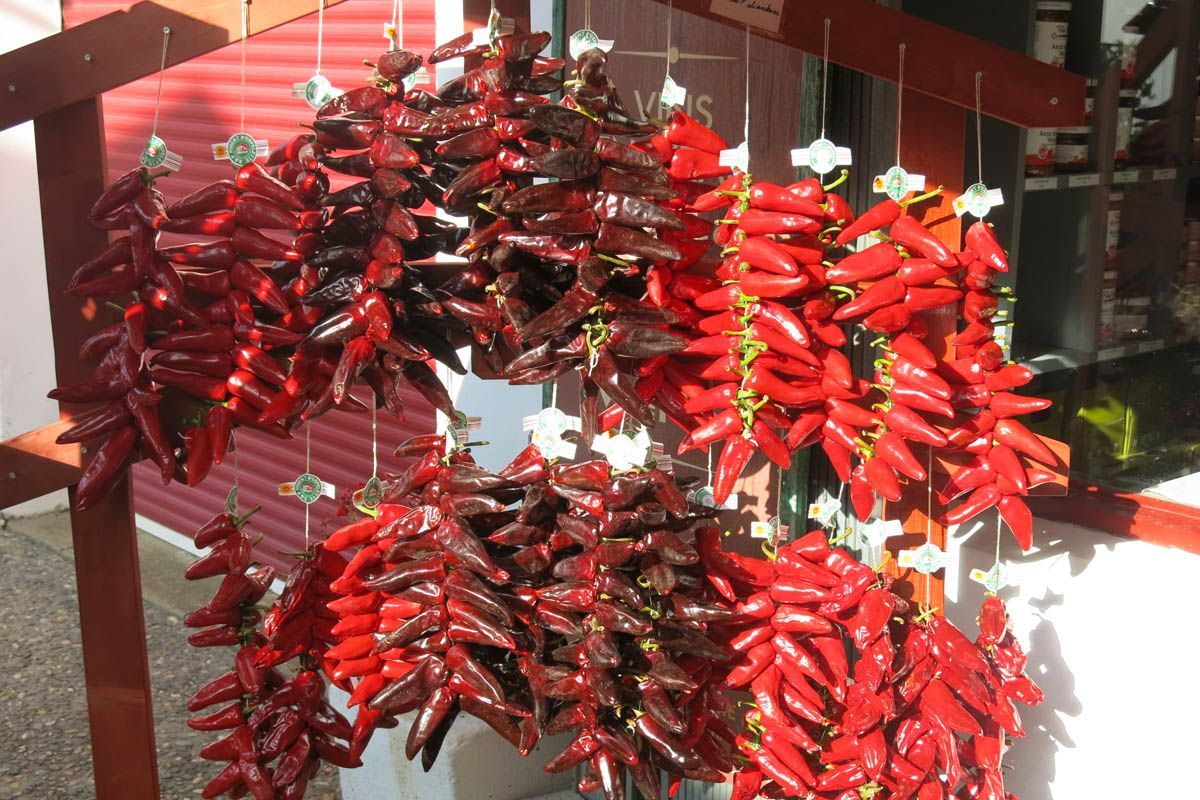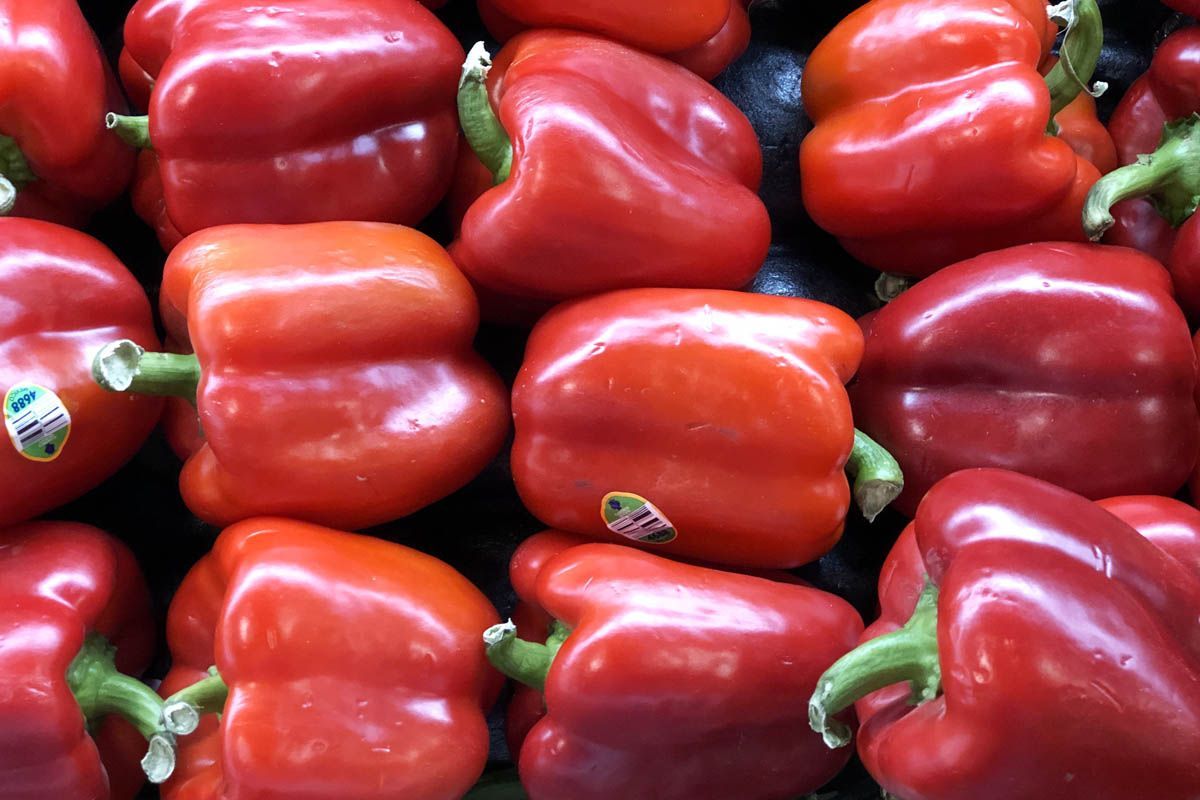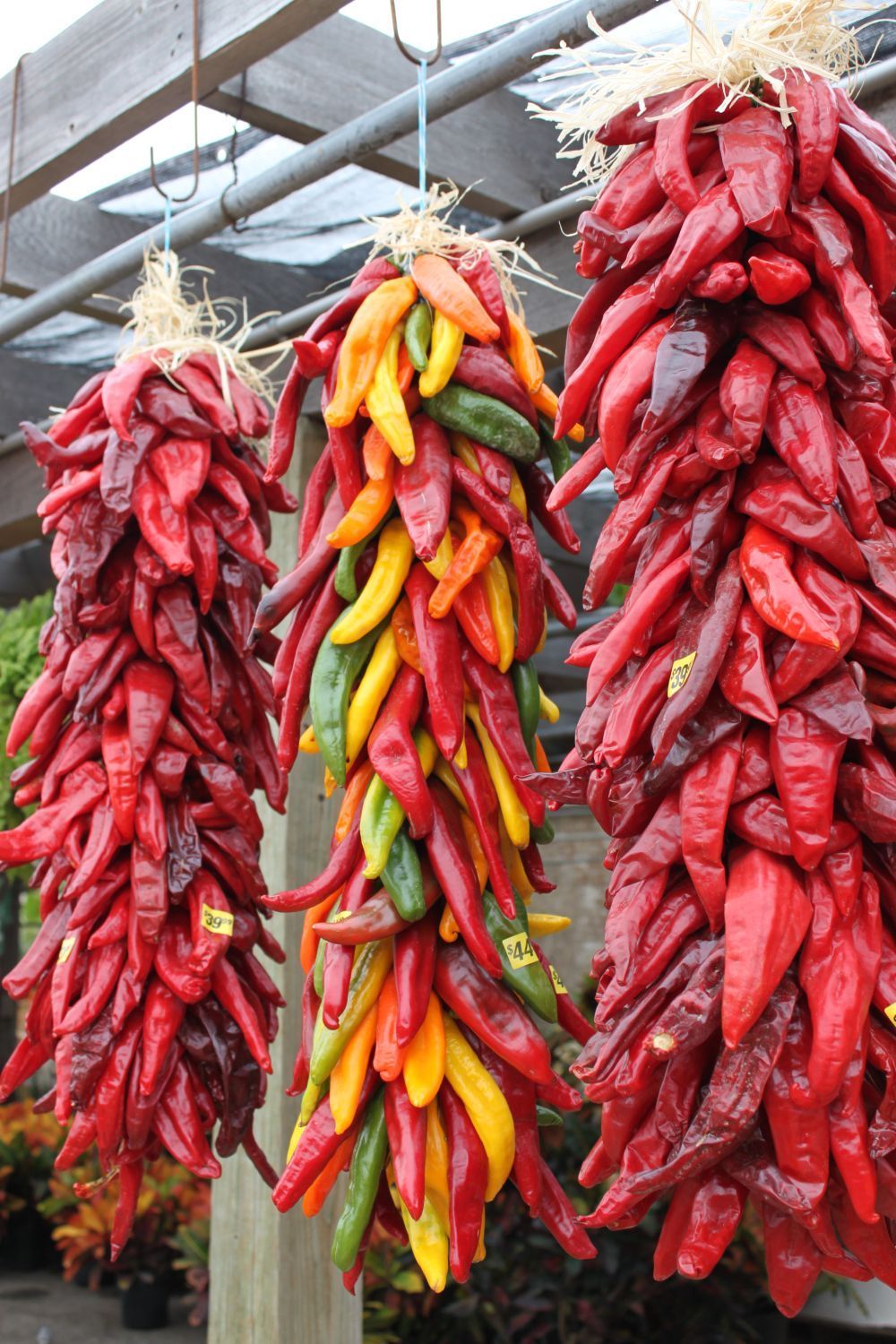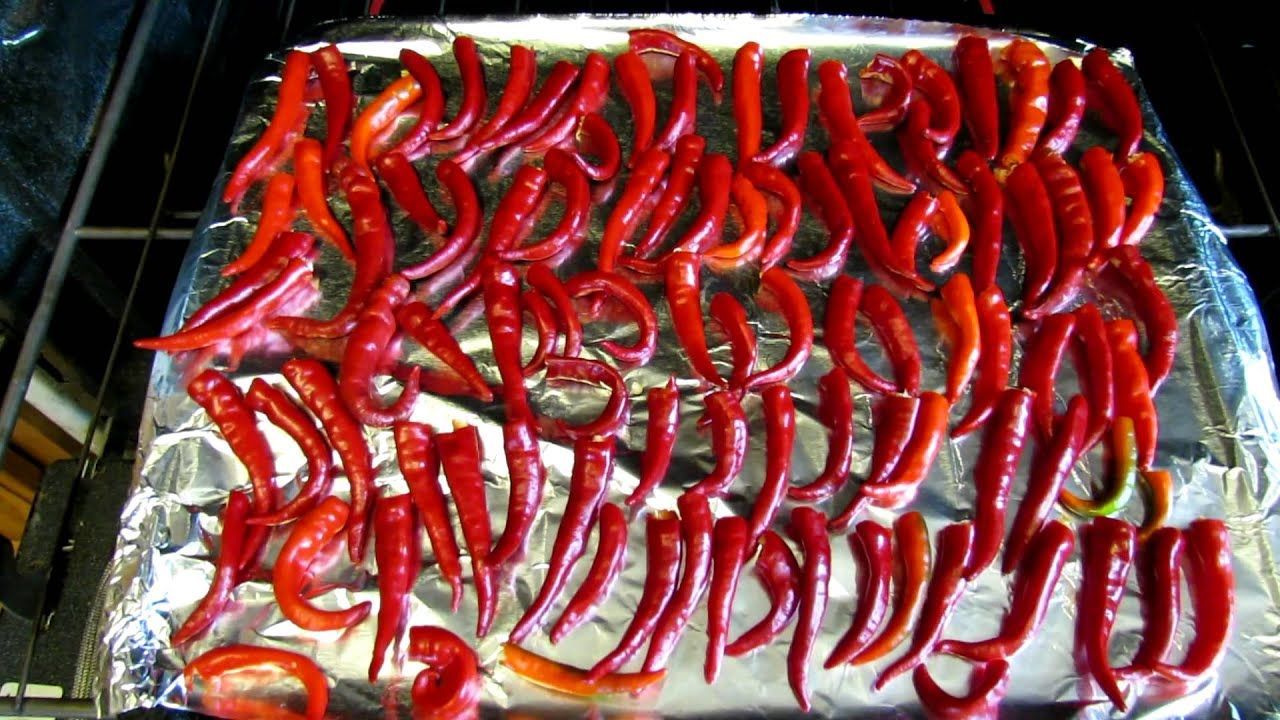Our recommendations are made independently. We may receive commissions from purchases made via our links.
How to Dry Peppers
Searching for ways to dry chili peppers at home? This article has everything that you need to know about how to dry peppers and preserve them for long-term use.
There are many good reasons why learning how to dry peppers should be on your to-do list.
Dried peppers are extremely shelf-stable compared to their fresh counterparts, making them ideal for long-term storage. Plus, for spice-lovers out there, dried chili peppers are generally more potent than fresh. So, if you want your dish to have a bit more oomph, drying is a great way to do it.
This guide can tell you everything you need to know about drying peppers.
What Kind of Pepper Can Be Dried?
Fortunately, every kind of pepper can be dried. Hot peppers, sweet peppers, and bell peppers are technically all cultivars of the same species — as long as it’s considered a pepper cultivar, it can be dried.

But there are certain types of pepper that give you better flavor and aroma than others, even after drying out. The most well-known is cayenne pepper. Dried cayenne is usually crushed into chilli flakes or chilli powder. It can even be rehydrated to be added directly onto your food or incorporated as a spice while cooking.
There are others out there, too. Red jalapeños, paprika, Anaheim pepper (New Mexican chile), and Chile de árbol (bird’s beak chili) all make excellent spices when dried.
Last but not least: sweet peppers. It doesn’t matter what size or color they are — all sweet peppers can be dried. Though they don’t give out any heat, their earthy and sweet taste can lend an extra layer of flavor to your food.
Do Dried Hot Peppers Really Taste Spicier?
It may sound like wishful thinking, but dried chilis actually do taste spicier than fresh ones. There are two reasons for this.
Firstly, peppers that are destined to be dried are typically allowed to fully ripen. Ripened hot peppers have more capsaicin — the chemical compound responsible for the sensation of sweltering heat— than unripened peppers.
Secondly, capsaicin is an oil-based compound, not water-based. So, when the peppers are put through the drying process, their water content mostly evaporates but leaves behind the capsaicin. The concentrated capsaicin is the reason why your peppers taste more potent once they’re dried out.
The Best Ways to Dry Peppers
There are several ways to dry peppers. The best method for you, personally, will depend on how much time you have. It will also depend on the surrounding environment and the kind of equipment you have at hand.
In the guide, we separated four different methods into two overarching categories: natural drying and artificial drying.

Natural drying means leaving the peppers out in the open or under the sun, letting them dry on their own accord. Drying peppers this way takes a very long time (several weeks). It is also not recommended if you live in areas with humid weather.
The upshot is that it is simple and doesn’t require you to invest in any equipment.
Artificial drying is the opposite in that your peppers will dry with the aid of some equipment. We recommend using the oven or a food dehydrator for this purpose. The advantage of artificial drying is that it is much quicker, taking only a few hours to a full day.
As far as we’re aware, there are no differences in terms of flavor or aroma between naturally-dried and artificially-dried peppers. Choose whichever method suits you best.
Compared to natural drying, artificial drying is more ubiquitous in today’s world. If you have both an oven and a food dehydrator in your house, you will be able to dry far more than just peppers. You can use this combination to dry many kinds of herbs.
For example, both are among the best ways to dry basil, which we explored in detail in a different article. They can be used to dry orange slices or cranberries as well.
So, though they’re quite expensive, high-quality ovens and dehydrators can be worthwhile investments if you regularly dry food at home.
How Do You Dry Peppers?
1. On a String
The first step is to find high-quality peppers. An ideal pepper should be at the peak of ripeness (not overripe). The body ought to be clear of blemishes and bruises. When squeezed gently, it should be firm, not mushy.
Wash the peppers and scrub off all of the dirt residue from their skins. Do not cut off the stems.
Once the peppers are ready to be strung up, you will need a sewing kit — a needle and cotton thread. 3 to 4 feet worth of thread will hold about 30 to 40 peppers.
Thread the string through the needle, then tie a knot at the string’s far end.
Push the needle through the base of the first pepper’s stem. Try not to punch through the actual flesh of the pepper.
Pull the thread through to place that first pepper at the end of the string, then start on the next one. Repeat until you’ve built up a full string worth of chilis.
In order to maximize airflow and accelerate the drying process, arrange the chilis in a loose spiral. Each chili in the sequence should lay at about a 30-degree angle to the one below.

When you finish, tie off the end. Hang the whole string someplace that gets plenty of sun. An open window is perfect. Avoid places where there’s a lot of moisture since it will encourage mold to grow on your drying peppers.
Speaking of moisture, we don’t recommend you to dry your peppers this way if you live in a region with high humidity. Your peppers will turn moldy due to all of the moisture in the air.
Wait 2 to 3 weeks for the peppers to dry. Once they do, put them into an airtight jar and store somewhere cool and dry.
They should last for up to a year.
2. In the Sun
If you’re reading this during the summer months in a place that doesn’t get much rain, good news: you can dry your peppers using nothing but the sun. The process is very simple.
Wash all of the peppers that you want to dry and wipe excess moisture from their skins with a dry towel. After that, coat each pepper in a thin layer of cooking oil. The oil will protect the peppers from being attacked by birds and insects while they’re sun drying.
Arrange the oil-coated peppers on a large tray. Give them plenty of spacing.
Place the tray somewhere that gets constant sun. This can be the roof, the balcony, or an open window.
Every few days, turn the peppers so that they dry out evenly.
The peppers should shrivel and become bone-dry in 1 to 2 weeks, depending on the weather. Store in an airtight jar.
3. In the Oven
This isn’t just the quickest method, it’s also the best way to dry peppers if you have a large batch.
Preheat your oven to its lowest temperature.
While the oven is doing its thing, prepare the peppers for drying. You can cut them lengthwise, in halves, or in quarters. The objective is to expose the flesh inside to the oven’s heat.
When both steps above are finished, take out a large baking sheet and line it with parchment paper. Arrange the peppers on top with plenty of spacing between each.
Bake for 8 to 12 hours, or until the peppers are crisp. The larger the pepper, the slower it’s going to dry, so take your time. If your smaller peppers dry out before the larger ones, take them out of the oven. Leave the larger ones inside to continue drying.
When the peppers are sufficiently dried, take them out and allow them to cool down to room temperature. Put into a glass jar and store.

If you were planning on making chili flakes, grind them on the spot before putting the flakes into the jar.
Fun fact: the way to dry thyme or dry cilantro in the oven is basically the same as above.
How to Dry Peppers in a Dehydrator
Put your peppers on the dehydrating tray. Give them plenty of space. The dehydrator works by using hot airflow, so you will want to maximize air movement between each pepper.
Set the temperature between 135°F to 145°F. Dry for 8 to 12 hours.
Similar to the oven, larger peppers will dry slower than smaller ones. If you have a mix of different sizes in your batch, observe the smaller ones carefully. When they dry out (often before the larger peppers), remove them from the dehydrator and leave the larger pods.
Collect the dried-out peppers and store in glass jars.
Similar to the oven, you can use the food dehydrator to dry a wide variety of food and produce. It is prominently featured in our guides on how to dry rosemary and how to dry mushrooms.
Conclusion
Knowing how to dry and store peppers can help you build a robust supply of spice year-round. As you can see, it’s not too difficult to do. We’re certain that if you put in the effort, you’ll be successful on the first try!
While you’re at it, you should check out other drying guides on HealthyRecipes101:
- How to Dry Parsley: among the most important herbs you need to have in your kitchen is parsley. Its unmistakable earthy, herbaceous taste can invigorate any dish. Drying — through whichever method you choose — can extend its shelf-life for years. You can learn how to do it in this article.
- How to Dry Oregano: peppery and astringent, oregano is a special herb. You won’t regret keeping a small stash of the stuff in your kitchen. And for long-term storage of oregano, there’s no preservation method that’s better than drying. All of the essential info about oregano drying is packed into this short guide.
- How to Dry Mint: mint is a highly versatile leaf. Adding some to your tea can help with an upset stomach. Mint can also be incorporated into different sauces and selected recipes. Find out how to dry-preserve mint leaves here.
- How to Dry Dill: dill pairs very well with seafood, soups, and salads. Even when it’s dried, it still retains quite a lot of its distinct flavor and aroma. This guide outlines all of the ways to make dried dill from the comfort of your home!





